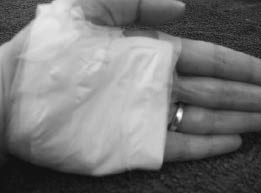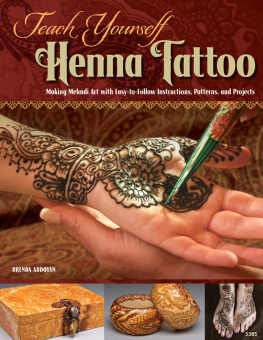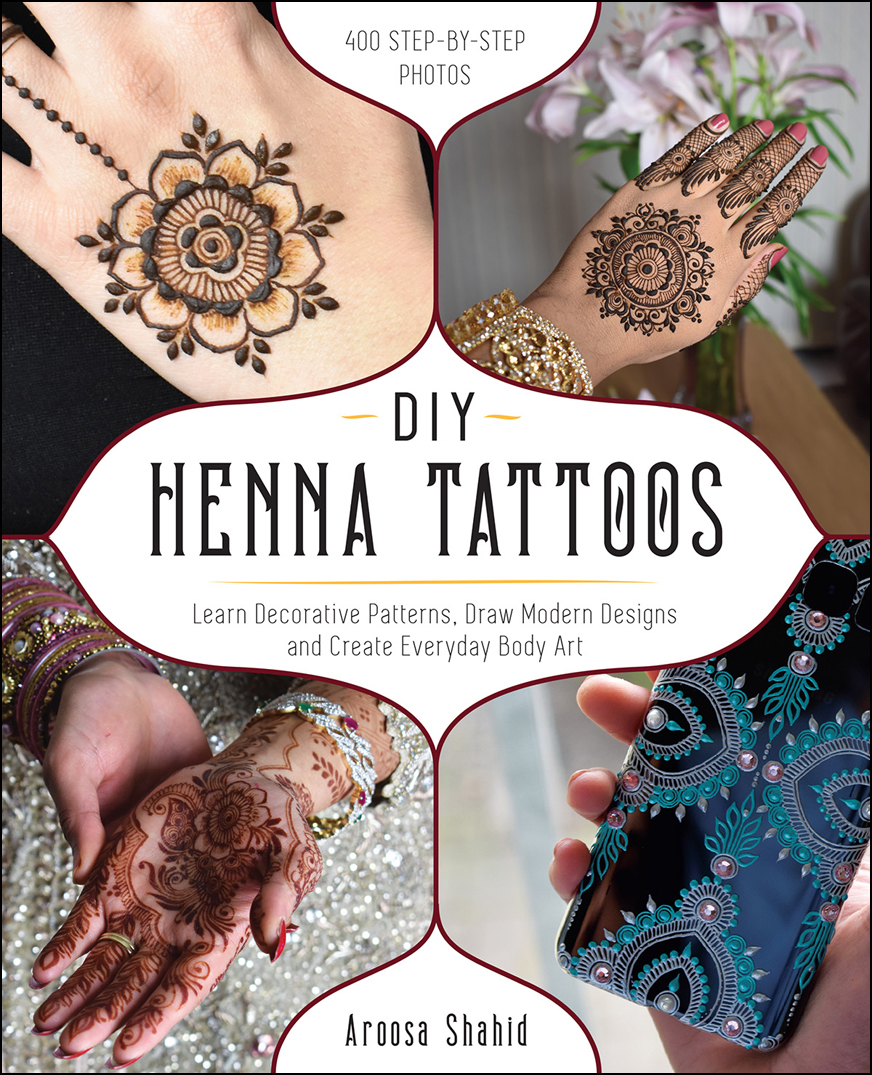
Text and photographs copyright 2018 Aroosa Shahid. Design and concept copyright 2018 Ulysses Press and its licensors. All rights reserved. Any unauthorized duplication in whole or in part or dissemination of this edition by any means (including but not limited to photocopying, electronic devices, digital versions, and the internet) will be prosecuted to the fullest extent of the law.
Published in the US by
Ulysses Press
P.O. Box 3440
Berkeley, CA 94703
www.ulyssespress.com
ISBN: 978-1-61243-823-8
Library of Congress Control Number 2018930695
10 9 8 7 6 5 4 3 2 1
Acquisitions editor: Casie Vogel
Managing editor: Claire Chun
Project editor: Claire Sielaff
Editor: Lauren Harrison
Proofreader: Shayna Keyles
Design and layout: Malea Clark-Nicholson
Production: Jake Flaherty
Interior art: background design Nadezhda Molkentin/shutterstock.com
Distributed by Publishers Group West
IMPORTANT NOTE TO READERS: This book is independently authored and published and no sponsorship or endorsement of this book by, and no affiliation with, any trademarked brands or other products mentioned or pictured within is claimed or suggested. All trademarks that appear in material lists, photographs, and elsewhere in this book belong to their respective owners and are used here for informational purposes only. The author and publisher encourage readers to patronize the quality brands mentioned and pictured in this book.
Dedicated to my family,
followers, and supporters.
TABLE OF CONTENTS


Table of Contents
Guide


Natural henna is an elegant and safe method of body adornment practiced as part of different cultures and traditions around the world. Henna application is easy and painless, resulting in a temporary stain on the skin.
What Is Henna?
Henna, also known as mehendi, comes from the henna plant, called Lawsonia inermis. The leaves from the plant are dried, milled, and sifted to form a fine powder. The powder is then turned into a smooth paste by combining it with a liquid, such as water or lemon juice, and various essential oils, like cajeput, eucalyptus, lavender, and tea tree. This process allows the dye contained within the leaves, called lawsone, to be released.
Many different methods can be used to apply the paste to the skin; however, the most common and effective method is by using a plastic cone, similar to a piping bag used for decorating pastries. When the paste is applied to the skin, the dye will begin to stain the skin and the paste will dry on the skin after 30 minutes. The longer the paste is kept on the skin, the darker the stain will be. Natural henna paste leaves a bright orange stain when initially removed, and it darkens over the course of the day. Henna naturally leaves the deepest and longest-lasting stains on the palms of the hand and soles of the feet due to the thickness of the skin in those areas. The stain will remain on the skin for four to five days, after which it will slowly fade away through the natural exfoliation of the skin. Henna that immediately stains the skin a deep color is unnatural, may contain chemicals, and should be avoided.
History of Henna Art
Henna art is a centuries-old tradition practiced in the Middle East and Asian countries. Henna was traditionally used for various purposes. Due to its cooling properties, people living in hot climates would use henna as a way of cooling their body from the heat. This is why their whole hands and feet would be covered in a block of orange stain. Evidence suggests ancient Egyptians also used henna to dye the nails and hair of mummies before they were buried. In addition to this, henna was used as a form of decorating the body with different patterns. In Asian countries such as India and Pakistan, it is custom for brides hands to be adorned by henna, often in the shape of a filled circle in the middle of the hand, which gradually developed into the intricate and precise mandala designs seen today. It is believed that a dark stain on a brides hands means she will have a prosperous married life.

How I Got Started with Henna
My interest in henna first sparked when, as a child, my cousins would apply henna on my hands for the Islamic festival of Eid. I was intrigued by the detailed designs they so effortlessly made. This made me want to try applying henna too. I began doing henna on family as my hobby while I was still in high school. As I got better with time and practice, I took on a few clients that were drawn to my work through mutual friends. In the next few years, I established my work online through social networking sites, and my Instagram quickly gained popularity. During this time I experimented with henna art using acrylic paint and started designing candles, phone cases, and canvases. Phone cases became my most sought-after products.
Many henna artists that I met online have been an inspiration to me and have helped me come a long way in my passion for henna. I have learned so much about using and making natural henna from the online henna community, which would not have been possible otherwise. I believe anyone can become a henna artist as long as they take time to practice and improve their work continuously. Being a henna artist means challenging yourself and your art daily. Even when you think you have reached a point where you are very good at your work, there is always room for improvement. I feel blessed to be able to follow my passion for henna and the endless opportunities it has brought me.
In this chapter, you will learn about the supplies and tools needed to make your own henna cones. You will also become familiar with the different types of henna powders used to make henna paste, and instructions on how to best store henna cones so they last longer. Finally, you will learn all the tips and tricks to achieve the darkest henna stains.


Making your own natural henna paste at home is very easy and requires only a few ingredients. Unlike store-bought henna cones, homemade henna cones are safe to use on the skin as you are aware of everything that has gone into making them. The most important thing is to ensure you are using good-quality henna powder.
Henna powder comes in many forms and varieties. Some result in a creamy paste and others provide a stringier paste. The most popular are Sojat and Rajasthani henna powders. Look for the triple-sifted or five-times-sifted henna powders, as these will make it easy to mix and youll get a smoother paste.















